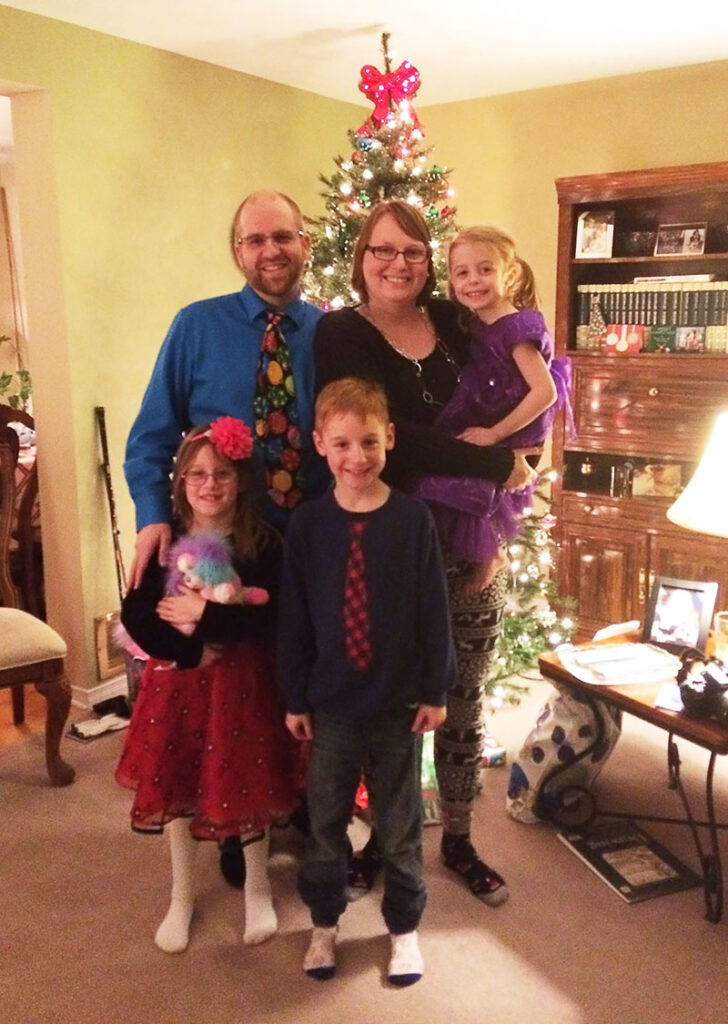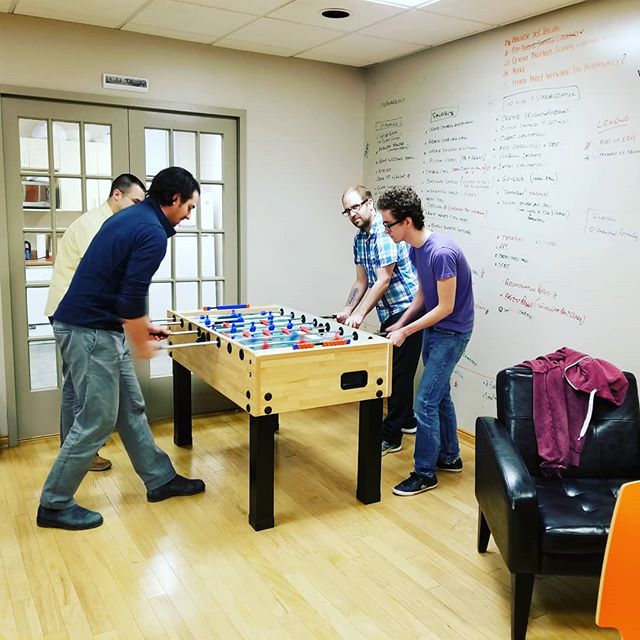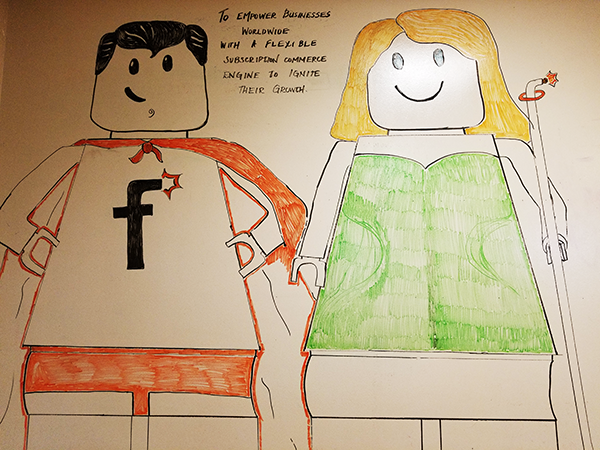Jamie Munro, part of the software development team for Stax Bill, has no problem dividing his time between the methodical and inventive sides of his mind.
A die-hard lover of all things computer-related, Jamie was not only fascinated with games, but he was also interested in how to make improvements on the software he used. In high school, he began developing websites, and naturally, he followed a computer programming track while attending the Algonquin College of Applied Arts and Technology.
After college, he took his skills to various web development positions, working about 5 or 6 various jobs. “A lot of it was agency work,” Jamie said. “There was a project here or there, and a lot of highs and lows.”
The dichotomy of stability with a fintech startup
Finally, drawn to the stability that Stax Bill had to offer, he started working for the Ottawa company in May 2013, as a Software Engineer. “I liked the idea of working for a single company,” he said. “I’m never bored—there is an endless amount of work.”
He admitted that working for a startup has had its ups and downs. Looking back over his five-plus years, he added, “There have been a lot of changes, and most of them for the better.”
With a young family, the stability is an added bonus. “Stax Bill has been really great,” he said. “If I work overtime, it’s by choice.” For the most part, he works a straight 8-hour day though. “It is a really good work-to-life balance.”
His weekends are free to spend time with his family, too. “We just put in a pool this year,” he said. “It’s great to come home, jump in and cool off.” When they aren’t cooling off though, he takes his daughter to dance class, and his son to hockey.

And when he is at work, he’s immersed with a team of developers that have been together for at least two years. “Our team is constantly working on something new,” he said.
Fintech innovation as a team
In fact, every two weeks, Jamie said they work in two-week ‘sprints’ where they hope to push out a new software update. “We talk about what features we want to add,” he said. “We’re always thinking about new elements, whether they are new billing features or reporting-based features of historical sales.”
A lot of times, the ideas come directly from the customers, but they also listen to potential customers. “They’ll say, ‘Oh, I’d like to do this…’ or ‘How can I do that?’” Other times, an idea might come from a different project owner or a member of the management team.
It can be stressful, Jamie admitted. “Most times, though, you can go to work, pick up a story, put on your headphones and make great progress. It’s an everyday high.”
Still, it’s important to let go of problems when he’s at home; otherwise, he’d be up at 2 a.m. solving issues and not sleeping. “Every evening, I take 10 minutes to let my mind wander, and get out all those crazy thoughts.”
And the development team has other ways of releasing steam during a stressful day. “With the development team culture,” he said, “at lunch, we play two games of foosball. It gets a little rambunctious at times, but it helps to blow off steam and check out of work. When lunch is over, we have fresh minds to get back in there again.”

Words of wisdom for fledgling developers in the startup world
If gifted with the opportunity to go back in time and give himself advice when he was hired by a startup company, he would emphasize patience. The words of wisdom he would give himself can benefit anybody in the position of starting work with a startup:
“Be prepared for a lot of ups and downs. During those downs, remember that the grass is not greener on the other side. Work with the company and people to overcome those downs instead.”
It also helps for the development team to keep in mind that they are not reinventing the wheel, which is one thing he wants to impress on any developer who is thinking of jumping on board with a startup company. “When you’re struggling with something, 9 times out of 10, someone has done it before. It’s not new information,” he said, “When a product is out for 5 or 6 years, it’s not about releasing a new product. It’s about releasing new features.”
This sense of sharing knowledge with others is evident in one of his other pastimes: writing. “In 2009, I was working with a small agency. We were all learning new technology and trying to help each other. I realized I was better at explaining something in writing than I could verbally. When you’re speaking with someone and going through a process with them verbally, there’s a lot of back and forth. But when I’m writing it, I can let my thoughts flow uninterrupted.”
To this end, he started his own website and blog called End Your If, followed by Webistrate. There, he began writing articles about common problems he has come across and the solutions to overcome them. “After about a year, I realized all my blog articles could be rolled into a book.”
That book, “Rapid Application Development With CakePHP” was self-published, but it gave Jamie the credibility to go to a traditional publishing house. “I’ve written four books for O’Reilly Media, a large technology-based publishing groups.
In 2011, he wrote “20 Recipes for Programming MVC 3” followed by “20 Recipes for Programming PhoneGap” 6 months later.
“The first two books were like a cook book format. You didn’t need to describe things in a lot of detail.”
Then, the publishing house changed the formatting, and the next two books were a little slower in coming. “I was overwhelmed by the amount of effort they took. The last two were more of ‘Here’s the basics, then grow the knowledge.’ It was a very stressful time to write, to be a dad, and to make sure that my work never suffered. I worked nights and weekends on my writing.” His perseverance paid off and O’Reilly released “Knockout.js” in December 2014, followed by “ASP.NET MVC 5 with Bootstrap and Knockout.js” in May 2015.
“Sometimes, people love it and they grasp the explanations,” he said. “Other times, they might not understand just how the solution is being presented to them.” Sometimes, it takes a little time to internalize the solution, but people with questions can reach out to him via his social media links displayed in his sites.
Evolution of a career at Stax Bill
Looking back over the last five-plus years at Stax Bill, Jamie is convinced this was the best step for him. “I actually left a team lead role (of over 12) to join Stax Bill.” While the leadership role was challenging, it took his focus away from what he really loved doing: development. With Stax Bill, though, his responsibilities filled that void he felt at his former job. “Coming to Stax Bill was a great decision.”
As much as Stax Bill has benefited from Jamie’s expertise, he has had plenty of opportunities to develop his own skills as well. “Coming from the agency life of project-to-project, there was less need to think of the long-term picture of code structure and regression testing,” he explained. “Since working at Stax Bill my development, testing, and code organization skills have vastly increased.”
Already looking toward the future, Jamie plans to stay with Stax Bill and help it become a glowing triumph, plans that are supported by Stax Bill’s aggressive employee stock option plan, which adds to the excitement. “I’m going to work as hard as I can to make Stax Bill successful,” he said. “That way, I can enjoy life faster when I’m able to take an early retirement.”
Until that time, there are plenty of opportunities and challenges to keep him occupied. As he said, one of the biggest draws keeping him at Stax Bill is “working on a single application with an unlimited amount of features to develop. It constantly keeps me busy and on my toes.”





